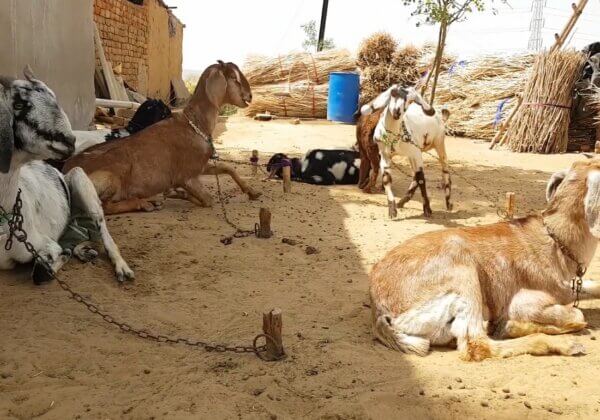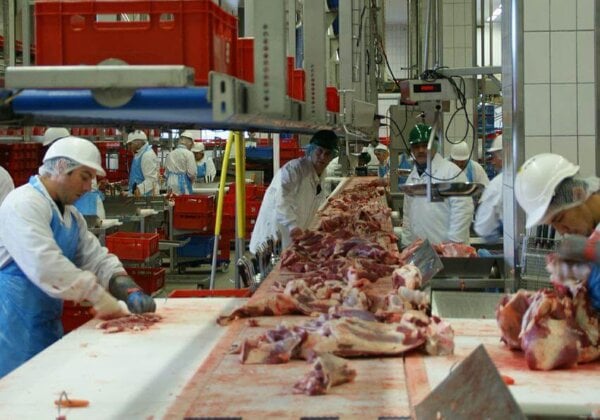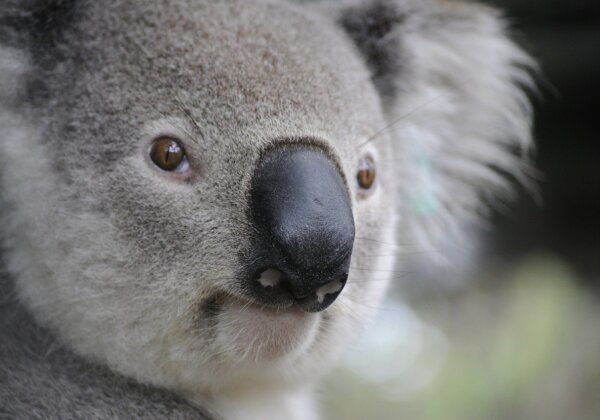Fish Facts You Need to Know
Billions of fish and other sea animals are killed every year for food. Even though these animals have nervous systems similar to our own and can feel pain, they’re slaughtered without any regard for their welfare and denied even the basic rights of protection afforded to land animals raised for food. As a result, fish suffer horribly in nets, on hooks, and on the decks of fishing boats – slowly suffocating or being cut open while still conscious.
There’s also a grave environmental cost associated with humans’ appetite for fish and seafood: fishing vessels are decimating the world’s oceans, leaving them empty, lifeless, and on the brink of ecological collapse.

Friends, Not Food
Because they look different from us and have scales instead of hair and gills instead of lungs, fish are often misunderstood. But we have many things in common with the animals who live underwater – for example, they, too, often live in complex social groups, have distinct personalities, are able to learn and remember new information, develop profound personal relationships, and experience pain and fear when harmed. Some fish can learn to avoid nets or recognise individual shoalmates.
A specialist in fish behaviour from Macquarie University in New South Wales, Dr Culum Brown, says, “Fish are more intelligent than they appear. In many areas, such as memory, their cognitive powers match or exceed those of ‘higher’ vertebrates including non-human primates.”
Fish also feel pain. As biologist Victoria Braithwaite writes, “[T]here is as much evidence that fish feel pain and suffer as there is for birds and mammals”– a conclusion hardly surprising to anyone who has seen a fish struggling and fighting for life when pulled from the water.

Murder Without Mercy
Fishers toss the fish they’ve caught into piles of ice on deck, where they slowly asphyxiate, freeze, or get crushed to death – horribly cruel and drawn-out ways to die for these cold-blooded animals. Scientists estimate that it can take up to 15 minutes for them to lose consciousness. The gills of others are cut or their throats and bellies are slashed open while they’re still alive on decks awash with blood.
Those who are pulled up from deep waters often suffer from rapid decompression, which can rupture their swim bladders, pop out their eyes, or force their internal organs out through their mouths. And in catch-and-release fishing, up to 43% of fish don’t survive the trauma of being impaled with a hook and hoisted out of their natural environment.

Plenty More Fish in the Sea?
Because humans drag fish out of the sea by the billions, the numbers of fish are dwindling drastically and many species are close to extinction. Commercial fishing vessels also do untold damage to the marine environment. Massive trawlers with nets the size of football fields destroy coral and marine plants on the seabed and scoop up all life in their path – including sea urchins, dolphins, crabs, turtles, and seals. In long-line fishing, ships unreel lines that are up to 120 kilometres long and bristling with deadly, baited hooks. Giant drift nets are invisible to most fish and hang in the water as a wall of death that ensnares every animal who swims into them.

Fish Farms Are Factory Farms
Around 43% of Australian fish used for food come from farms – where, like all factory-farmed animals, they endure intense confinement, filthy conditions, mistreatment, and high levels of disease and parasites. Kept in underwater cages, they never have the chance to swim freely or exercise their natural instincts, such as salmon’s powerful urge to migrate upstream each year.
Fish farmers lace feed with chemicals and antibiotics (in an attempt to counteract the harmful effects of severe crowding) as well as with drugs that unnaturally accelerate growth. These substances harm the fish themselves, the humans who then ingest their flesh, and the local environment, as waters become contaminated.
Fish farming is also unsustainable. Just like other farmed animals, commonly farmed fish such as tuna and salmon eat more calories than are contained in their flesh when they themselves are eaten by humans. Small fish such as anchovies and sardines are taken from the ocean to be fed to farmed fish. Australia’s largest salmon producer, Tassal, uses 2 kilograms of wild-caught fish to produce just 1 kilogram of farmed salmon.
In coastal areas, off-shore fish farming causes waste such as faeces to pollute the surrounding area, and the waste eventually settles on the seafloor. The aquaculture industry in Tasmania has caused dramatic falls in oxygen levels in Macquarie Harbour and dead zones on the seafloor.
Crustacean Cruelty
Lobsters and crabs used for food are frequently subjected to one of the cruellest fates suffered by any animal: being boiled alive. When these sentient animals are plunged into a pot of boiling water while still conscious, they’re hurt just as much as you’d expect to be hurt yourself – and they show it by frantically scrabbling at the sides of the pot in terror and agony for up to a minute before they die.
Some cooks also dismember or declaw them without painkillers. And prior to being killed, naturally solitary lobsters are piled on top of one another in tiny tanks. Their pincers are bound together to prevent them from tearing each other apart as they’re driven insane by the intense, unnatural confinement.

Toxins and Chips? Fish and Your Health
Farmed fish often live in water that’s so dirty, you would never drink it. Their bodies absorb a toxic mixture of bacteria, contaminants, and heavy metals – which are then passed along to anybody who eats them. The bodies of sea animals such as tuna can contain high levels of mercury because of industrial pollution, sometimes causing mercury poisoning in humans. Symptoms include hair loss, cognitive impairment, and increased risk of suffering from heart disease.
As for the much-lauded health benefits of omega-3 essential fatty acids, it’s perfectly possible to get plenty of these from plant sources. Walnuts, flaxseed, soya beans, nori, spirulina and cauliflower all contain these vital nutrients – without a toxic dose of chemicals and cruelty.
What You Can Do
It’s simple: stop eating fish and other sea animals. You’ll save many lives and no longer be supporting a global industry that harms millions of sentient beings a day and wrecks our environment.
If you still want to enjoy the taste of your favourite fishy dishes but don’t want to harm animals, these simple swaps will help get you off the hook.
Get a Free Vegan Starter Kit Here!
Animals Used for Food:
Environment | Free Vegetarian/Vegan Starter Kit | Cattle | Chickens | Pigs | Sheep | Dairy Cows







